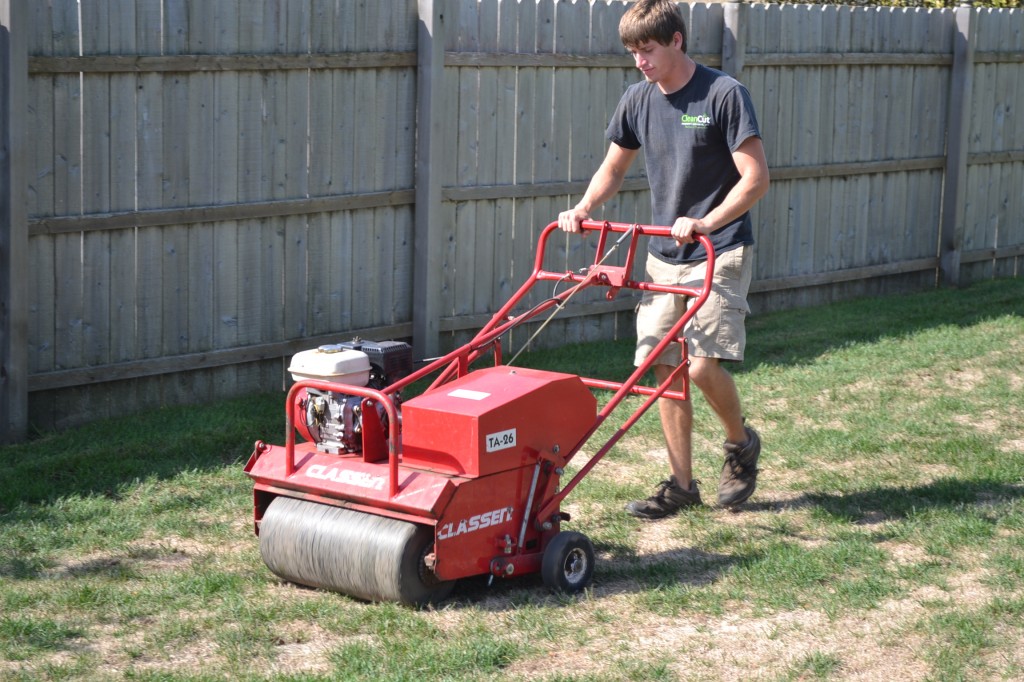Lawn aeration can help your turf grass recover from drought. Most lawns in eastern Iowa have been through some tough weather this year. Drought and heat have definitely taken a toll on the quality of grass in most of our lawns. With the recent cooler temperatures and rain, most of our lawns have started to recover. With that being said, lawn damage is now more visible than ever. If you walk around your property and inspect your lawn, you will most likely find a lot of bare patches. If you take a closer look at the bare patches, you should be able to tell if there are signs of life or not. If you only have a few green blades of grass in a couple of feet of lawn, then you will most likely have to do some lawn repairs this fall.
Core lawn aeration can help in the lawn repair process by exposing soil for seed contact. The process of core lawn aeration works by removing plugs of soil about the size of your thumb with a lawn aerator machine. These plugs are taken out every 4 inches or so and dispersed over the top of your lawn. It is important to core aerate your lawn as opposed to spike aerating your lawn. The process of spike aeration cuts slits in your soil without removing a plug. Spike lawn aeration really doesn’t do anything for your lawn. There are really no noticeable benefits from the process.
The benefits of core lawn aeration include:
- Reduction in soil compaction.
- Increased movement of air, water and other vital nutrients into the root system.
- Helps reduce excessive thatch build-up.
- Stimulates new root development
When you core aerate your lawn, you are exposing the soil and root system of the existing grass. If you aerate your lawn first, then over-seed, your seed will fall in the holes created by core aeration. Overtime the hole will fill in and cover the seed, basically planting the seed in the ground. Lawn aerating and over seeding your thin lawn areas will help increase turf density.

